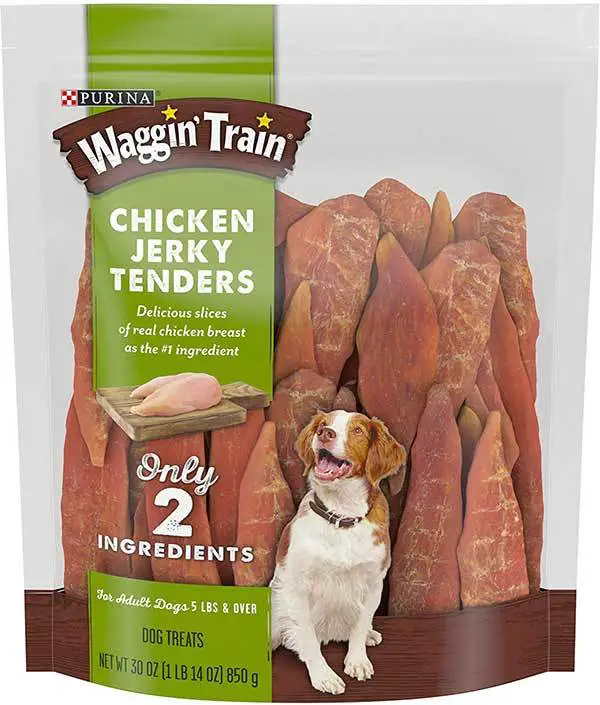Can Dogs Eat Hot Dogs?
It’s impossible to spell hot dogs without dogs. So, intuitively, there shouldn’t be anything wrong about offering hot dogs to dogs, right?
Well, the question as to whether dogs can eat hot dogs or not isn’t the kind we can answer in a flat “yes” or “no”. According to experts, there are occasions when hot dogs are beneficial for dogs, and instances when you shouldn’t offer hot dogs to your pooch.
Generally, hot dogs are safe for dogs if they are served plain – without any fillers, preservatives, condiments, and seasonings. Also, the meat used should be high-quality.
If you purchased the meat from your local butcher and can guarantee its quality and safety, then there shouldn’t be anything wrong with offering hot dogs to your dog.
On the flip side, you shouldn’t offer hot dogs to dogs if the meat is of questionable quality. Above all, the hot dog shouldn’t contain potentially toxic preservatives, excess sodium, or toppings and flavors that are considered harmful for dogs.
In the face of these conflicting positions, most pet parents may experience challenges deciding whether to freely offer hot dogs to their canine friends or not. But as you shall find out, the cons of serving hot dogs to dogs far outweigh the pros.
Read on for more insights.
Table of Contents
Popular Hot Dogs Ingredients
As we’ve seen so far, the jury is still out on whether dogs should have hot dogs or not. Indeed, you might still be wondering to yourself, are hot dogs okay for dogs to eat?
Well, one of the best ways to answer that question is to take a closer look at the top ingredients that make up hot dogs.
[thrive_leads id=’7777′]The following is a rundown of some of the popular ingredients that most hot dogs are made of.
1. Meat
Most hot dogs are made of beef, but you can also find hot dogs made of pork, chicken, or turkey. Usually, the meat is cut away from roasts or steaks.
To make it ready for use in hot dogs, the meat is ground into fine pieces and mixed with various spices. Typically, hot dogs aren’t made of organ meats or variety meats.
2. Flavors
When it comes to flavoring hot dogs, there are scores of ingredients to experiment with. An example is beef stock, which is essentially beef bones that are cooked in water. It’s often added to hot dogs to enhance the meaty flavor.

Another common flavor is dextrose, which is sugar that naturally occurs in honey and fruits, but could also be obtained from starch.
There’s also hydrolyzed vegetable protein, a flavor enhancer that’s made by breaking down legumes or cereals into their amino acids using hydrochloric acid.
Other common flavors used in hot dogs include;
– Autolyzed yeast extract;
– Sugar and corn syrup;
– Monosodium glutamate (MSG); and
– Sorbitol.
3. Preservatives
The most common preservative used in hot dogs is sodium nitrite.
As a curing ingredient, sodium nitrite prevents hot dogs from going rancid by inhibiting the growth of potentially dangerous bacteria. The compound also enhances the pink color in the meat.
However, sodium nitrite is believed to escalate the proliferation of cancerous cells. To modulate its effects in hot dogs, ascorbic acid, also known as sodium ascorbate is usually added. Sodium erythorbate may also be used in the place of sodium ascorbate.
4. Citric acid
Used to modulate the acidity of other ingredients.
5. Cherry powder
Used as a color enhancer.
6. Lauric arginate
Added to prevent the growth of bacteria.
7. Oleoresin of Paprika
Added as a color and flavor enhancer.
8. Collagen casing
This is the edible casing of hot dogs, which is made of beef proteins.
9. Spices
Most spices used with hot dogs include coriander, onions, garlic, cumin, black pepper, cinnamon, paprika, and nutmeg.
10. Salt
Used as a preservative and flavor enhancer.

But even after having examined the top hot dogs ingredients, the question remains – can you give your dog hotdogs? The following sections shall help to settle this question.
Are Hot Dogs Good For Dogs? What Are The Benefits?
The one obvious benefit of hot dogs for dogs is that the food mainly comprises of meat, and dogs are known to be carnivores.
However, note that this applies only to certain types of hot dogs. For instance, experts generally encourage gourmet hotdogs that are made of succulent and high-grade sausages.
Dogs benefit from the meat in hot dogs nearly the same way humans do. When our bodies absorb the proteins that are present in meat, the protein is broken down into its constituent amino acids. Amino acids are the simplest forms of protein, which primarily comprise of carbon.
Our bodies are designed to recycle amino acids and use them as the building blocks for our muscles, tissues, tendons, and ligaments. Amino acids also play a key role in the formation of neurotransmitters and certain enzymes.

Like humans, dogs recycle the meat present in hot dogs to build their own bodies. And since dogs are primarily carnivores, their bodies are more efficient at converting meat into essential amino acids.
So, are hot dogs good for dogs?
Yes, dogs can benefit from eating hot dogs since the food is mostly made up of meat, which constitutes a dog’s main diet. However, that’s as far as it goes. As we shall find out in the next section, most other common ingredients in hot dogs, as well as the quality of meat used, may make hot dogs toxic for your pooch.
[thrive_text_block color=”note” headline=””]ALSO READ: Can Dogs Eat Mustard? Good or Bad for Dogs! [/thrive_text_block]Harmful Ingredients in Hot Dogs & How They Could Affect Your Dog
1. Meat
At a fast glance, the meat that’s used in hot dogs shouldn’t be a cause for concern. After all, dogs should eat meat, right?
Well, most hot dogs are made of processed meat. And we know the position of experts on processed meats for humans, let alone dogs. You wouldn’t want to feed your canine friend foods that you are apprehensive about eating, would you?
To process the meat, it’s usually heated to ultra-high temperatures. The high temperature conditions destroy most of the nutritional element that the meat contains. Worse yet, over-heating meat introduces potentially-toxic chemicals into the food, such as heavy metals.
2. Salt
Salt is another ingredient that experts discourage for dogs, and hot dogs contain an abundance of it.
The National Academy of Sciences observes that while the average hot dog contains more than 500 milligrams of sodium, a normal dog weighing 33 pounds requires a paltry 200 mg of sodium every day.
According to these numbers, one-half of a hot dog for your dog already exceeds the recommended daily portion of sodium intake. Which brings us to the question, how many hot dogs can a dog eat daily?
Based on salt concentration alone, a dog shouldn’t have more than one-half of hot dogs per day. The portion could shrink even further, depending on the number and concentration of other harmful ingredients.
[thrive_text_block color=”note” headline=””]ALSO READ: Can Dogs Eat Pizza? Don’t feed till you read this! [/thrive_text_block]But how does a high salt content in hot dogs affect your dog?
Like sugars, dogs don’t process salt very well. The most obvious side effect of consuming excess salt is frequent thirst sensation, which goes hand in hand with frequent urination.
And while these symptoms may not sound very serious, there are other more dangerous consequences to watch out for.
Examples include gastrointestinal symptoms like nausea, vomiting, and diarrhea, mental symptoms like depression, and neurological symptoms like seizures and tremors.

Excess salt could also affect the normal functioning of your dog’s vital organs, including the heart, liver, kidney, and skin. Without prompt and adequate medical intervention, salt poisoning could lead to death. And that helps settle the question, can hot dogs kill dogs?
3. Garlic and Onions
Onions and garlic are commonly mentioned among the top foods that dogs should not eat.
Sadly, they are some of the most popular spices and toppings added to hot dogs. Excess consumption could lead to onion/garlic toxicity.
Some of the signs to watch out for include;
– Lethargy and generalized weakness;
– Hyper-salivation;
– Occasional nausea, vomiting, and diarrhea;
– Pale gums;
– Red or brown discolored urine; and
– Ataxia,
4. Preservatives
As we already mentioned, sodium nitrite is the most popular preservative used in hot dogs. Sodium nitrite replaced sodium nitrate that had been used from time immemorial as food preservative.
However, these chemicals present potential harm to the bodies of your canine friend, and sodium nitrite is the more dangerous of the two. In fact, sodium nitrate only becomes toxic when it’s converted into sodium nitrite.
Most nitrites are notorious for their ability to induce and enhance the proliferation of cancerous cells.
Signs of sodium nitrite poisoning occur when the concentrations of methemoglobin concentrations reach 40%. They include ataxia, lethargy, cyanosis of mucous membranes, and chocolate-brown blood. If methemoglobin concentrations hit 70%, death could occur.
So, can hot dogs make a dog sick? Based on the toxic levels of the ingredients used, hot dogs can make your dog seriously ill and even kill it.
[thrive_leads id=’12402′]5. Buns
A bun is basically bread, and is considered another toxic food for dogs.
When consumed, bread is broken down into sugar, which is further broken down into fat. Added to the fact that most hot dogs contain more than 300 calories and over 15 grams of fat, you could be introducing alarmingly high levels of fats into your dog’s system.

Some people may opt for hot dogs made of turkey or chicken meat, arguing that they contain minimal fats. However, the amount of fats in chicken and turkey hot dogs is still considered high enough for dogs.
Besides the above side effects of hot dogs that are caused by the ingredients used, hot dogs also present choking hazards.
That’s especially considering that dogs tend to gobble down their foods instead of chewing it. Your best bet is to cut the hot dog into bite-size pieces before offering it to your dog.
[thrive_text_block color=”note” headline=””]ALSO READ: Can Dogs Eat Calamari? Is It Good for your Dog? [/thrive_text_block]Can Dogs Eat Cooked Hot Dogs?
There’s always the question of whether you should offer cooked or raw hot dogs to your pooch. But do you have to cook hot dogs for dogs?
Yes, if you’ve resolved to feed hot dogs to your furry friend, you should insist on cooked as opposed to uncooked hot dogs.
👉 Raw hot dogs may contain disease-causing pathogens, which are usually destroyed through cooking. Also, note that the cooking method matters a lot. Hot dogs meant for dogs should be boiled in plain water and offered to the dog plain.
Avoid adding too much spice, condiment, or other potentially toxic ingredients that we’ve highlighted above.
Is It Safe For Dogs To Eat Hot Dogs?
While hot dogs aren’t immediately dangerous to dogs, your canine friend is probably better off without them. That’s because hot dogs contain many ingredients that make them a no-no for dogs.
If you are looking for a perfect treat for your pooch, you might consider safer alternatives, such as carrots, pineapple, watermelon, or simply go for homemade hot dogs.




